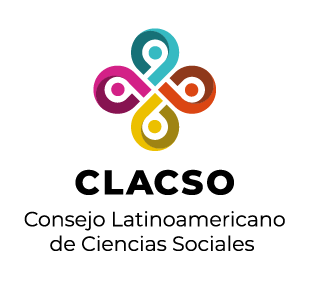Red de Bibliotecas Virtuales de Ciencias Sociales en
América Latina y el Caribe

Por favor, use este identificador para citar o enlazar este ítem:
https://biblioteca-repositorio.clacso.edu.ar/handle/CLACSO/239874| Título : | Flood return time: methodological application Tempo de retorno de inundações: aplicação metodológica |
| Palabras clave : | Linear Correlation Coefficient Pearson;Time of return;Urban Flooding;Coeficiente de Correlação Linear de Pearson;Tempo de retorno;Inundações urbanas |
| Editorial : | Programa de Pós-Graduação de Geografia Humana e Programa de Pós-Graduação de Geografia Física |
| Descripción : | Esse trabalho possui o intuito de realizar a estimativa do tempo de retorno das inundações urbanas no município de Jaguari, RS. Destaca-se que o processo metodológico abordado nesse trabalho fez-se uso dos dados das réguas milimétricas obtidas da Agência Nacional de Águas (ANA), e, dessa forma, com a utilização do aplicativo “Pesquisas HidroWeb” (PRINA, 2014b), pode-se sintetizar os dados a fim de obter amostras do tempo de retorno das inundações. Com isso, pode-se realizar a estimativa do tempo de retorno. Para tal, utilizaram-se 6 funções matemáticas, no aplicativo Excel (MICROSOFT, 2007b), a fim de prever o tempo de retorno e posteriormente comparar os dados, obtendo a melhor estimativa. Assim, entre várias informações obtidas, compararam-se: a correlação entre as amostras e os dados estimados, por meio do Coeficiente de Correlação Linear de Pearson (R²), e o desvio padrão dos resíduos. Assim, a partir das várias análises, constatou-se que a função que melhor modela o tempo de retorno das inundações urbanas na área de estudo é a Logarítmica, por gerar o maior R² e o menor desvio padrão dos resíduos. This paper has the purpose to perform the estimated time of return for urban floods in the city of Jaguari, Brazil. The methodological process of this paper occurred with use the data from millimeter rulers obtained from the Agência Nacional de Águas (ANA), and, thus, with the utilization of app Pesquisas HidroWeb, it was synthesized for the purpose data to obtain samples of time of return for floods. It was used six mathematical functions, from Excel, in order to predict the time of return and subsequently comparing the data, obtaining the best estimate. Like this, between various information obtained, were compared: the correlation between the samples and the estimated data through the Linear Correlation Coefficient of Pearson (R²) and the standard deviation of residues. Therefore, from the various analyzes, was observed that the function better modeling the estimate of time of return in the study area is Logarithmic, for generating the highest R² and standard deviation of the lowest of residues. |
| URI : | https://biblioteca-repositorio.clacso.edu.ar/handle/CLACSO/239874 |
| Otros identificadores : | https://www.revistas.usp.br/geousp/article/view/145266 10.11606/issn.2179-0892.geousp.2018.145266 |
| Aparece en las colecciones: | Departamento de Geografia - DG/USP - Cosecha |
Ficheros en este ítem:
No hay ficheros asociados a este ítem.
Los ítems de DSpace están protegidos por copyright, con todos los derechos reservados, a menos que se indique lo contrario.